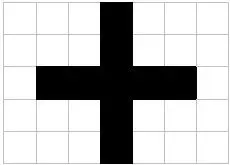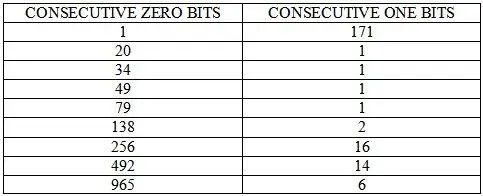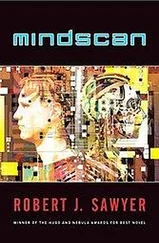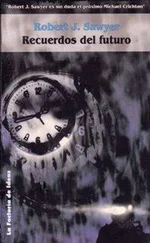The message was received in the form long anticipated: as a Drake picture pictogram, a series of on and off bits that could be arranged to form pictures. What was unusual was the frequency. Nowhere near the waterhole. No, it was on a UV channel, one barely readable from the surface of a planet with a decent ozone layer—and Earth’s was quite robust, having been replenished by the SkyShield factories late in the twenty-first century. In fact, the message came on a frequency that could not be detected clearly even from the highest mountaintop. The Senders, evidently, did not want planet-bound people to know of their existence. Only those with the sophistication to place ears above their world were welcome to listen in. The SPIELBERG system in Mechnikov Crater, part of the University of California at Far Side, was the first to pick up the signal.
After we left, the fact of the reception was announced to the general population of Earth, for all the good it would do them. I’m sure they made efforts to decipher and interpret the signal, which appeared to consist of four pages. The humans would have had no trouble eventually coming to a basic understanding of the first three of those pages. Certainly, I found them easy to translate, at least in their basic content. But the fourth page continued to baffle me. From time to time, I’d review the process by which I had deciphered the first three in hopes of finding the elusive clue to understanding the fourth and last page.
Each page began with this sequence:
1011011101111101111111011111111111011111111111110
Converted to black and white pixel, it looked like this:

That was reasonably straightforward: the first seven prime numbers, 1, 2, 3, 5, 7, 11, and 13. An attention-getter, something even the most rudimentary human or electronic monitor would recognize as a sign of intelligence. Each page ended with the sequence in reverse: 13, 11, 7, 5, 3, 2, and 1.
After that, it seemed to be simply a matter of discarding these page headers and footers and arraying the remaining bits in a rectilinear form.
The first message page was thirty-five bits long:
00010000001000011111000010000001000
Thirty-five is the product of two primes, five and seven. That meant the bits could be arrayed either as five rows of seven bits, or seven rows of five. For the former, converting the zeros and ones to light and dark pixels produced:

Not quite gibberish, but certainly not instantly meaningful, either. Trying the other possibility yielded:

A cross. Obviously a registration mark so that the recipient could be sure that the message had been decoded properly. Also, a quick check of the aspect ratio of the monitor being used to view the messages. The horizontal and vertical arms each were five pixels long. If they appeared the same length, the ratio was correct. Simple, straightforward, easy to comprehend. And yet, I am sure, humanity must have made much of the fact that the very first image received from the stars was the sign of the cross.
Or was it that simple? Was there a deeper meaning to the two symbols produced by arranging the thirty-five bits in two different ways. Decoded the obviously correct way, these ones and zeros produced a bitmap for a character that looked like a plus sign, +. Decoded the apparently incorrect way, it produced a line with disjointed dots, vaguely reminiscent of a tilde, ~. Could these symbols, + and ~, be the Senders’ arbitrary signs for correct and incorrect, true and false, right and wrong? Perhaps. Perhaps.
The three remaining pages were all also the products of two prime numbers. For pages one and three, the correct array was obvious: assigning the larger prime to be the number of columns produced the meaningful image. Pages two and four were more difficult to immediately comprehend, but it seemed clear that this was the Senders’ convention for layout.
After the descending 13, 11, 7, 5, 3, 1 footer for the first page, there had been a pause in the transmission of seventeen hours, eleven minutes. An identical pause was repeated between each of the remaining pages. This, one might assume, was the day length of the Senders’ home world.
The next page was more complex. Its length was 4,502 bits, the product of the prime numbers 2 and 2,251. Just two rows of 2,251 columns? What could that mean? I had contemplated both rows together, found no meaningful correlations, then had considered each row separately, starting with the one that came out on top. It consisted of the following sequence of zero and one bits, reading left to right:

and then four extra zeros to pad out the line length.
Well, the seventh pair of numbers caught my eye, so to speak: 256 and 16. In hexadecimal, 100 and 10—the radix for that counting system squared, and the radix itself. Nice round numbers. Obviously the Senders wanted to draw attention to them, indicating, perhaps, that they were the baseline from which the other figures were produced.
I crunched the data all sorts of ways. Nada. I then decided to discard the first row, a zero followed by 171 ones, since the large number of ones seemed anomalous. Still nothing. Next, I proceeded to look at the remaining numbers of consecutive zero bits separately: 20, 34, 49, 79, 138, 256, 492, and 965.
Well, if 256 was indeed the base figure, then perhaps I should look at the other numbers as ratios to 256. That would be decimal 0.08, 0.13, 0.19, 0.31, 0.54, 1.00, 1.92, and 3.77. Hmm. Nothing obviously significant about those proportionalities.
Ah, but maybe the choice of having the numbers relative to the sixth string of zeros was significant in a way I didn’t yet understand. What would happen if I performed the math to assign the base figure of 1.00 to the first string, then expressed all the other numbers as ratios to it? No, nothing significant there either.
If I made them all ratios to the second string? Again, nothing significant.
The third string? Ah, hah! Yes, those numbers I did recognize. Rounded to a single decimal place, they were 0.4, 0.7, 1.0, 1.6, 2.8, 5.2, 10.0, and 19.6, the values produced by the old Titius-Bode law, the ratio in astronomical units of the distances from the sun to the planets of Earth’s solar system. More generally, the progression
D = 0.4 + 0.3·2 n
where n equals negative infinity for the first planet, zero for the second, one for the third, and so on.
Formulated in 1766, the Titius-Bode law seemed to do a good job of conforming to the real mean orbital distances of the naked-eye solar planets and, indeed, had led to the discovery of Sol’s asteroid belt, exactly where the law predicted a planet between Mars and Jupiter should have existed.
The law fell out of favor in the twentieth century, as the outer planets were discovered at positions that did not correspond to its predictions—the discrepancy for Neptune being 22 percent and for Pluto, 49 percent.
But it came back into favor early in the twenty-first century when it was shown that Pluto was an escaped Neptunian moon and that Neptune’s orbit and the Oort cloud had been radically perturbed by the close passage of a black hole some sixty-five million years in the past. The same event had knocked Uranus on its side.
Читать дальше















